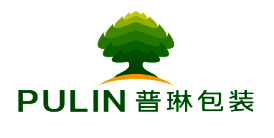|
Common printing terms1. White exposure/leakage: Printing paper is mostly white, and during printing or plate making, the colors of the connection are not closely matched, exposing the white paper background. 2. Whitening: The photographic plate making process of the internet era. To remedy the insufficient sensitivity in dark areas of online images, you can remove the original flash once or add a piece of paper to compensate for the exposure, or directly use a flash light to flash white light to increase the depth of the original and soften the image. 3. Fat explosion: "Overeating" will naturally lead to "fat", and if there are too many silver grains in the Philippines, the light will also expand the territory. Manual typesetting involves exposing and fertilizing the photosensitive film with transparent thick film. 4. Colortrapping: Intentionally expanding the color transition position during color separation and plate making to reduce the impact of inaccurate overprinting. 5. On site: refers to the area of color blocks without branches, usually referring to the full page. 6. Whitening: Text or lines are printed with shading, revealing paper white. 7. Mesh collision: The amplitude modulation mesh color separation process results in incorrect distribution of dot angles, or if the distance between each dot angle is less than 25 °, the turtle pattern will become apparent. 8. Feiwang: The hanging net process for lens plate making, which involves removing the hanging net after normal exposure and adding brief exposure to increase contrast. 9. Dog Teeth: A dog's "teeth" are a combination of bumps and indentations. The image has insufficient pixels, and when enlarged, the edges appear in a "dog tooth" shape. 10. Rose flower spot: a deer like mesh pattern. Poor ones are called cushion patterns, and even worse are turtle patterns. 11. Alignment: The instruction for layout placement, using the prefix as the baseline. Extending to typesetting and binding, it refers to using the header position as the reference. 12. Mask: It is a masking film used for manual color separation, which can be made by drying film or cutting red film, and can be used for returning or color correction. 13. Reflexion: Refers to a printing method that saves printing plates. Printing one side of the paper first, then reversing the paper left and right, and reversing the bottom, is called a bottom reversal plate. When the bottom of the paper is reversed, it is called a tooth reversal plate. The process of printing the back of the paper without changing the printing plate. 14. Needle position: The edge position of the gauge on the printed sheet. Paper has different lengths, and printing, color matching, and cutting require needle alignment. 15. Stone Quantity: The term used in the era of stone printing to refer to the quantity of printing. One color pressed on paper is worth one stone. 16. Second hand: does not refer to "second-hand goods". The assistant of the fingerprint brush machine, also known as the sight switch. 17. Proofreading: Pre print a formal printing sample using a proofing machine. 18. Bleeding: The printing and binding process requires the color or image of the page to cross the cutting line by 3mm, which is called bleeding. 19. Flying edge: "Flying" means cutting or removing. Flying edge refers to the removal of bleeding edges, which is a binding term. |







